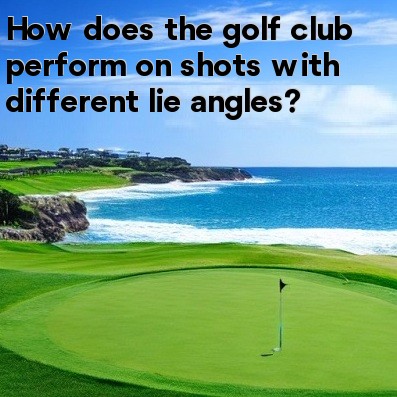
In golf,How does the golf club perform on shots with different lie angles?
When it comes to playing golf, the lie angle of your club plays a crucial role in determining how your shots will perform. The lie angle refers to the angle between the sole of the club and the shaft. Different lie angles can greatly affect the trajectory, spin, and direction of the golf ball. Let's take a closer look at how the golf club performs on shots with different lie angles.
- Standard Lie Angle: The standard lie angle of a golf club is designed to allow the club to make solid contact with the ground when the golfer assumes the proper stance. This angle provides the most accurate and consistent shots. When the lie angle is correct for a golfer's swing, the club's sole should be flush with the ground, resulting in the club striking the ball square. This allows for optimal ball flight and control.
- Upright Lie Angle: An upright lie angle means that the toe of the club is pointing slightly upwards compared to the standard lie angle. This lie angle is suitable for players who tend to stand more upright or have longer arms. An upright lie angle promotes a draw or left-to-right shot for right-handed golfers and can help to minimize slicing.
- Flat Lie Angle: A flat lie angle means that the toe of the club is pointing slightly downwards compared to the standard lie angle. This lie angle is suitable for players who have a more bent-over posture or have shorter arms. A flat lie angle promotes a fade or right-to-left shot for right-handed golfers and can help to minimize hooking.
- Lie Angle Adjustment: It is important for golfers to ensure that their clubs have the correct lie angle for their swing. If the lie angle is too upright or too flat, it can result in inconsistent shots and affect accuracy. Golfers can have their clubs adjusted by a professional club fitter to ensure that the lie angle is appropriate for their swing.
Now, let's discuss how different lie angles can affect the performance of your shots:
- Ball Flight: A more upright lie angle tends to produce a higher ball flight, while a flatter lie angle tends to produce a lower ball flight. The angle at which the club makes contact with the ball can significantly influence the initial launch trajectory.
- Shot Direction: An upright lie angle promotes a draw or left-to-right shot (for right-handed golfers) due to the closed clubface, while a flatter lie angle promotes a fade or right-to-left shot due to the open clubface. The lie angle can influence the clubface's angle at impact, affecting the direction of the shot.
- Consistency: When the lie angle is adjusted correctly for a golfer's swing, it helps ensure that the clubface is square at impact, resulting in more consistent shots. Inconsistent lie angles may cause the club to contact the ground at different points, leading to inconsistent shot patterns.
It is crucial for golfers to understand the impact of lie angles on their shots and to ensure that their clubs are properly fitted. Working with a professional club fitter can help identify the correct lie angle based on your swing characteristics.
By having the correct lie angle, golfers can optimize their ball flight, shot direction, and overall consistency. Making adjustments to the lie angle can help reduce common shot errors and provide greater accuracy on the golf course.





